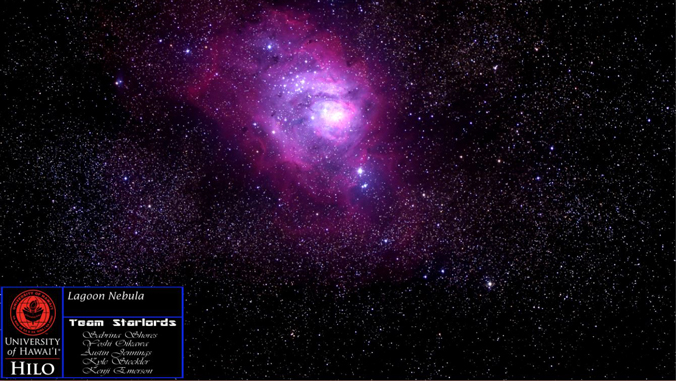

Ten students in the astronomy and physics program at the University of Hawaiʻi at Hilo recently went on a lab field trip to Maunakea where they practiced their astrophotography skills and captured spectacular photos of the night sky.
“The main goal of the lab is to introduce them to modern observational techniques of astronomy,” says R. Pierre Martin, associate professor of astronomy and the director of the UH Hilo Hōkū Keʻa Observatory on Maunakea. “The course [observational astronomy lab, ASTR250L] includes a series of experiments in observational astronomy, going from digital astrophotography to making real quantitative photometric and spectroscopic measurements on celestial targets.”
Students used a suite of small aperture telescopes, fully equipped with cameras, guiding systems, spectrographs, filters, computers and software.
“Under my supervision, each team decides which objects they want to observe, how they want to do it, how they will analyze the data, etc,” says Martin. “This is really very similar to what astronomers do on larger telescopes.”
The observations are performed outside at the mid-level facility on Maunakea, where it can be very cold.
“But we are really privileged to be able to observe from Maunakea where the night sky is quite extraordinary,” says Martin. “I pay attention to teamwork, as well, before, during and after the experiment. So far, we have done one expedition to conduct color astrophotography and let the students become more familiar with the equipment and software.”
From the classroom to the field

For most of the students, it is really the first time that they can start applying some of the tools they have learned in the classroom right there in the field, Martin explains. Technical aspects of telescope collimation, focusing and guiding techniques, and data correction are also covered.
“This gives them a good introduction and prepare them to use more sophisticated astronomy instruments in the future,” Martin says. “Thus, every student in our program has the chance to learn first with small telescopes, then use the future 0.7-meter UH Hilo Hoku Kea telescope and also the larger facilities on Maunakea.”
The class is going back up to Maunakea this week and the teams are planning some experiments on imaging nebulae with special filters to determine their chemical composition, measuring some properties of spiral galaxies, evaluating the motion of a comet, and some other specific, more technical observations.
“Despite the long hours in the cold, this is a lot of fun!” says Martin.

See more photos of the students during their observation run.
—By Susan Enright

